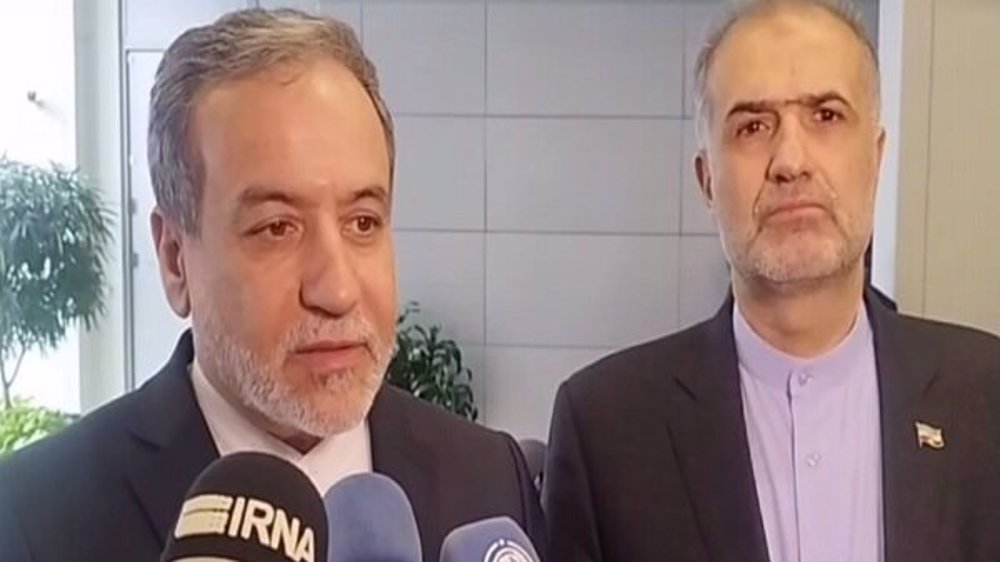US missile test proved Washington’s anti-Russia sentiment: FM spox
The Russian Foreign Ministry says the United States has lied to the international community as its recent missile tests proved the “falsity” of Washington’s statements that American air defense systems would not target Russia.
Maria Zakharova, the spokesperson for the ministry, made the comment on Thursday, two days after the US military — as part of an advanced intercontinental interception test — downed for the first time an intercontinental ballistic missile (ICBM) with a missile fired from a warship.
"We have seen the report of the Missile Defense Agency with the US military about the tests held in the Pacific Ocean on November 17, the task was to launch off sea a Standard Missile-3 of 2A modification at a target that simulated an intercontinental ballistic missile,” Zakharova told a briefing in Moscow.
“This is a new proof of dangerous and destabilizing policy of Washington on air defense, its clear anti-Russian sentiment," she added.
The Russian official said the US had earlier assured that the interception of Russian intercontinental ballistic missiles by American systems was technically impossible, however, the tests allegedly contradicted their statements.
"The recent test directly confirms the falsity of American assurances that the US global missile defense system is not directed against Russia," Zakharova underlined.
"This is direct evidence of a concrete example of how Washington manipulated the public opinion of its country, lied to its international partners and justified its actions in the international arena with absolutely far-fetched pretexts."
Stating that Russia reserves the right “to take the necessary response measures," Zakharova said Moscow accords high priority to ensuring national security and maintaining strategic stability.
The Standard Missile-3 is part of the Aegis Ballistic Missile Defense System, which Moscow has long contended to be in violation of the Intermediate-range Nuclear Forces (INF) Treaty as they could theoretically be converted into offensive systems.
The United States left the INF agreement in August of last year while blaming Russia for the collapse of the Cold War-era treaty.
Following the US decision, Moscow declared the formal end of the arms control treaty, signed in 1987 by then US president Ronald Reagan and Soviet leader Mikhail Gorbachev, limiting the manufacture and deployment of medium-range missiles.
The INF treaty had banned all land-based missiles with ranges of between 500 and 5,500 kilometres and covered missiles carrying both nuclear and conventional warheads.
The treaty was seen as a milestone in ending the Cold War arms race between the two superpowers, leading to the elimination of nearly 2,700 missiles from both sides.
The New START, which expires in February 2021, is the last major nuclear arms control treaty between Moscow and Washington that puts a limit on the number of strategic nuclear warheads each of the countries can have.
The US and Russia signed the accord in 2010 and agreed to reduce the number of their strategic nuclear missiles by half and restrict the number of their deployed strategic nuclear warheads to 1,550.
The New START can be extended for another five years, beyond its expiry date by mutual agreement, but discussions over the issue has stalled over a number of conditions set by the US side.

Russia: Europe trying to ‘derail’ talks with US, continue war

Iran's FM in Russia to 'consult on matters of common concern'

Kremlin warns Germany sending Taurus missiles to Ukraine risks 'escalation'
Iranian FM submits Leader’s written message to President Putin
Israeli minister: Troops to remain in Gaza, Lebanon, Syria ‘indefinitely’
Iran takes four countries to World Court over 2020 downed jet
Advocacy group files war crimes case in US against Israeli soldier
Israel secures 6-month delay in Gaza genocide case at ICJ
Houthi says US encouraging Gaza genocide, calls for arming Palestinians
VIDEO | Press TV's news headlines
Remembering Abdel Aziz Al-Rantisi, Hamas co-founder and ‘Lion of Palestine’










 This makes it easy to access the Press TV website
This makes it easy to access the Press TV website